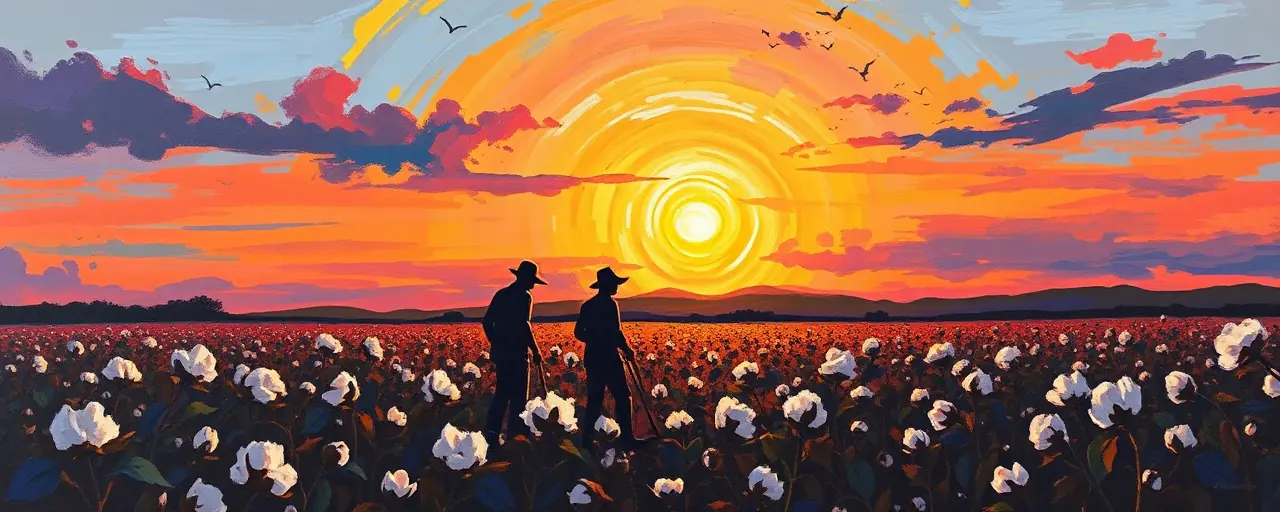The Heart of America’s Cotton Country
In Lubbock, Texas, the air hums with the quiet pride of farmers who clothe the nation. Cotton fields stretch across the horizon, a testament to the grit of producers who turn soil into fabric, medical supplies, and economic muscle. Yet, these stewards of the land face a storm of challenges: plummeting prices, soaring costs, and a federal bureaucracy that often feels more like a shackle than a support. The U.S. Department of Agriculture’s recent visit to Lubbock, led by Secretary Brooke Rollins, shone a spotlight on this vital industry and its fight to thrive.
Texas grows 55 percent of America’s cotton, a $7 billion engine driving jobs and global trade. The USDA’s Cotton Classification Complex in Lubbock, a first-of-its-kind partnership with Texas Tech University, grades one-fifth of the nation’s crop with unmatched precision. This facility, funded entirely by the cotton industry’s own sweat, slashes grading costs by 19 percent per sample. It’s a beacon of what farmers can achieve when government steps aside and lets them lead.
But the story isn’t all rosy. Cotton acreage in Texas is projected to drop 15.8 percent in 2025, down to 5 million acres. Low lint prices, coupled with spiking costs for labor, ginning, and stripping, are squeezing producers dry. Drought in the Panhandle has slashed yields, leaving some farmers with negative returns. This isn’t just a Texas problem; it’s a national one, with U.S. cotton planting expected to fall 14.5 percent this year. The question is clear: will Washington help these farmers or bury them in red tape?
Enter Secretary Rollins, a Texan who gets it. Her roundtable with cotton, sorghum, beef, peanut, and dairy producers wasn’t just a photo-op. It was a promise to roll back the Biden administration’s policies that choked rural America with overregulation and neglect. With President Trump back in the White House, the USDA is doubling down on putting farmers first, and Lubbock’s cotton growers are ground zero for this fight.
Bureaucracy’s Boot on the Farmer’s Neck
For years, federal policies have tilted the playing field against cotton farmers. The 2018 Farm Bill’s safety nets, like Price Loss Coverage and Agriculture Risk Coverage, sound good on paper but fall short when cotton prices have crashed 28 percent since 2021. Crop insurance reference prices are at a five-year low, leaving farmers exposed to market swings and weather risks. Add in rising labor costs and threats of immigration crackdowns that could shrink the migrant workforce, and it’s no wonder producers are switching to crops like sorghum or corn.
Some policymakers, particularly those cozy with urban elites, argue that farm subsidies are bloated handouts. They push for slashing programs like the Conservation Reserve or even dismantling the farm bill entirely. These voices, often amplified by think tanks far removed from the fields, ignore the reality: cotton farmers aren’t asking for charity. They’re demanding a fair shot to compete in a global market warped by foreign subsidies and trade barriers.
The USDA’s role in cotton classification offers a model of what government can do right. By grading 100 percent of U.S. cotton, the Lubbock facility ensures fair marketing and quality data that manufacturers rely on. This isn’t some bloated federal program; it’s funded by user fees because growers value unbiased grading. In a single season, USDA grading services prop up $7 billion in cotton marketing, with billions more rippling through the supply chain. Compare that to the heavy-handed regulations that drive up costs without delivering results.
Innovation Over Regulation
Texas cotton farmers aren’t just surviving; they’re innovating. Over the past decade, they’ve cut greenhouse gas emissions by 39 percent, water use by 18 percent, and soil loss by half. Precision agriculture, smarter irrigation, and regenerative farming are turning fields into models of sustainability. The 2025 Sustainable Cotton Challenge is pushing brands to source eco-friendly cotton, and Texas producers are answering the call with traceable, low-impact crops.
Yet, for every step forward, bureaucratic hurdles loom. Environmental regulations, often crafted by city-dwelling policymakers, impose one-size-fits-all rules that ignore the realities of rural production. Labor policies threaten to choke off the workforce needed to harvest crops. And while farmers invest in smart textiles and e-textiles for healthcare and wearables, they face uncertainty over farm support programs that could stabilize their finances.
Secretary Rollins heard these concerns loud and clear in Lubbock. Her pledge to reverse Biden-era policies isn’t just rhetoric; it’s a lifeline for farmers battered by four years of overreach. House Budget Chairman Jodey Arrington, a West Texas native, echoed this commitment, praising Rollins as a fighter for rural America. Together, they’re signaling a new era where innovation, not regulation, drives agriculture.
A Call to Stand With Farmers
The stakes in Lubbock go beyond cotton. They’re about the soul of rural America, where hard work and ingenuity clash with a federal machine that too often serves itself. Texas farmers aren’t just feeding and clothing the nation; they’re preserving a way of life that values self-reliance and community. The USDA’s work in Lubbock, from cutting-edge grading to listening to producers, shows what’s possible when government respects the people it serves.
President Trump’s vision for a vibrant rural America depends on leaders like Rollins and Arrington, who know that farmers don’t need handouts; they need freedom to compete. As Congress debates the next farm bill, the message from Texas is clear: back our producers, slash the red tape, and let cotton lead the way to a new golden age for American agriculture.
